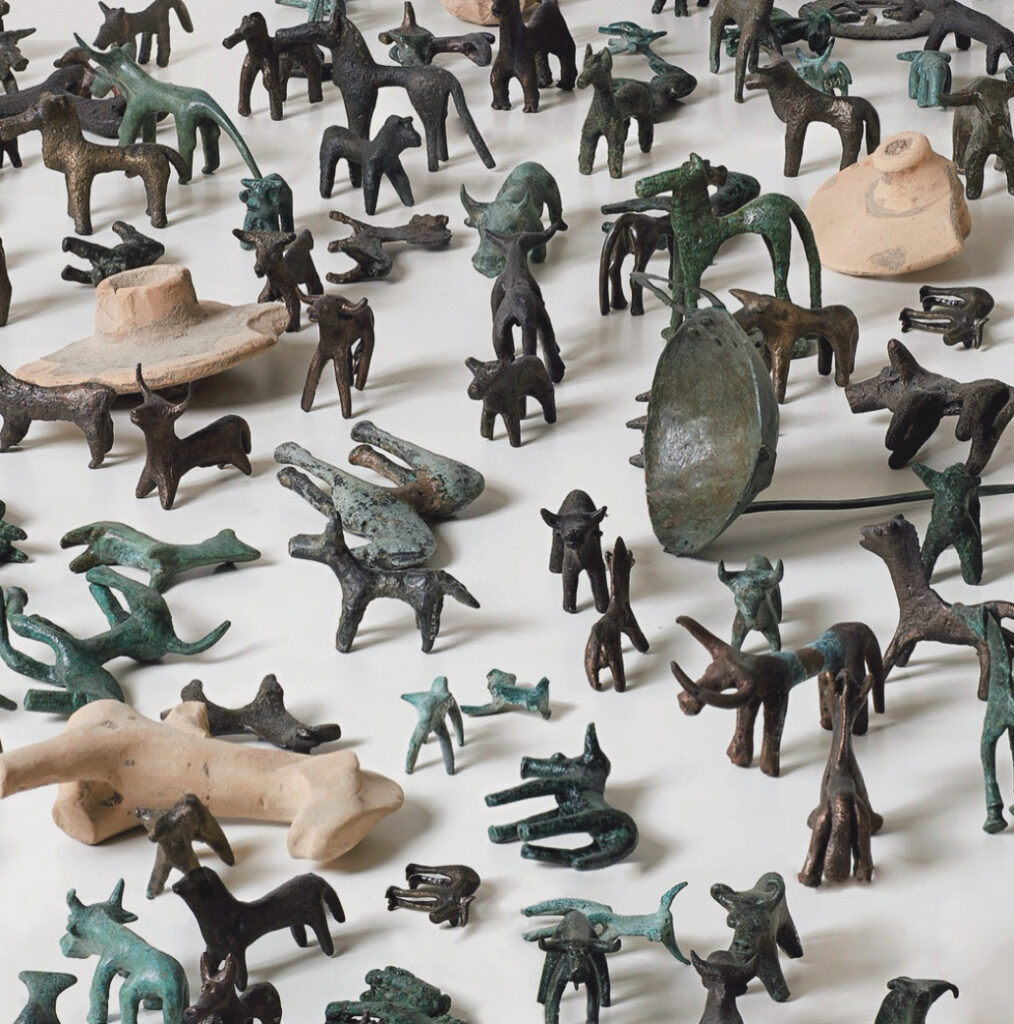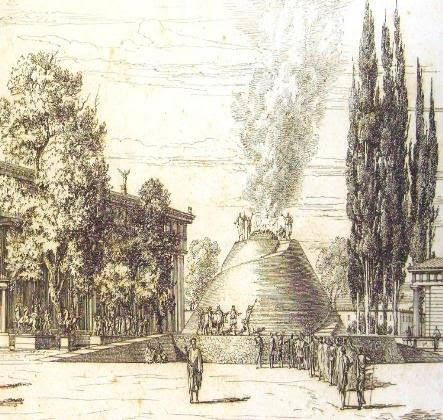Misleading photo alert! Because what I woke up thinking of left precious few archaeological traces, of which these dozens of assorted bronze figurines and remnants of vessels are tangible exceptions….And that is the monumental ash altar (active and growing for centuries) standing near the Temple of Zeus at Olympia.
Olympia was a crucially important religious sanctuary by the early 8th century B.C., and in that quintessentially Greek way was therefore a prime center for conspicuous consumption and extravagant displays of piety to Zeus the earth-shaker. Sacrificing cattle upon a dedicated (and very large) altar was the key rite in all of this: slaughtering the most beautiful bulls and sending the smoke of their bones and fat skyward to the gods.


But unlike other important altars in the Greek world, the one at Olympia remained curiously conservative and never acquired architectural trappings. Instead the resulting ash, remnants of bovine thigh bones, and a sprinkling of votive offerings accumulated over centuries, intentionally mixed with water from a nearby river until (as related by Pausanias in the 2nd century A.D.) it became a conical behemoth reaching 7 meters tall. These figurines come from an ash layer in about the right location, optimistically votive offerings at the altar in its very infancy.
The once colossal mound of compacted ash was in some ways the holiest of holies in the Panhellenic sanctuary, its importance underscored by its very simplicity and conservatism, even while surrounded by gleaming marble buildings. There’s something organic and strangely inexorable about it, no? And don’t discount the smell…




